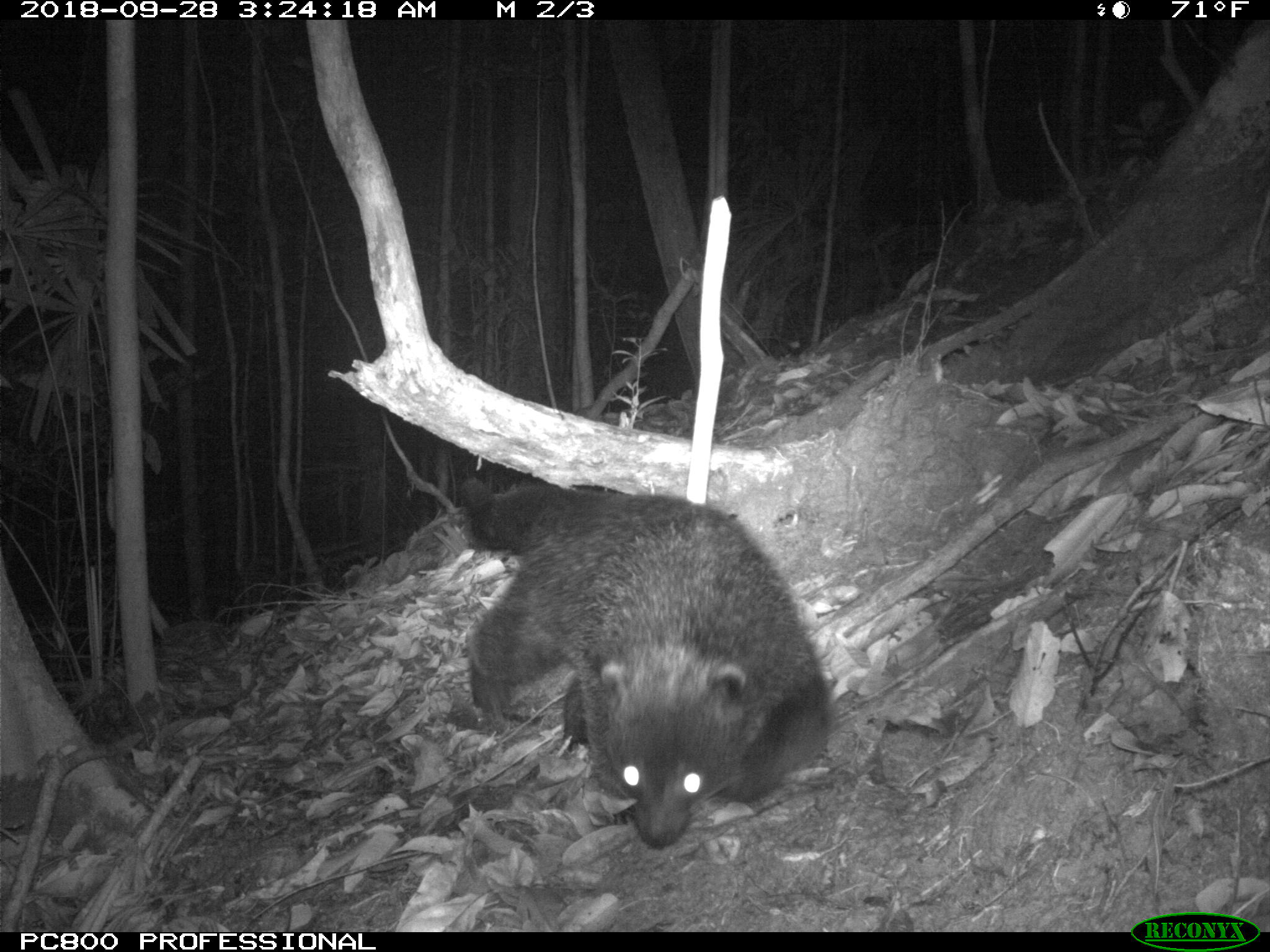I remember the first time I saw a binturong at the Atlanta Zoo and I wondered what the hell it was! Like it’s name suggests it looks like a bear and a cat (mixed with raccoon?), but it’s none of the above. Binturongs are none of the above. They belong to the family Viverridae which includes civets and genets (other animals you probably never heard of).
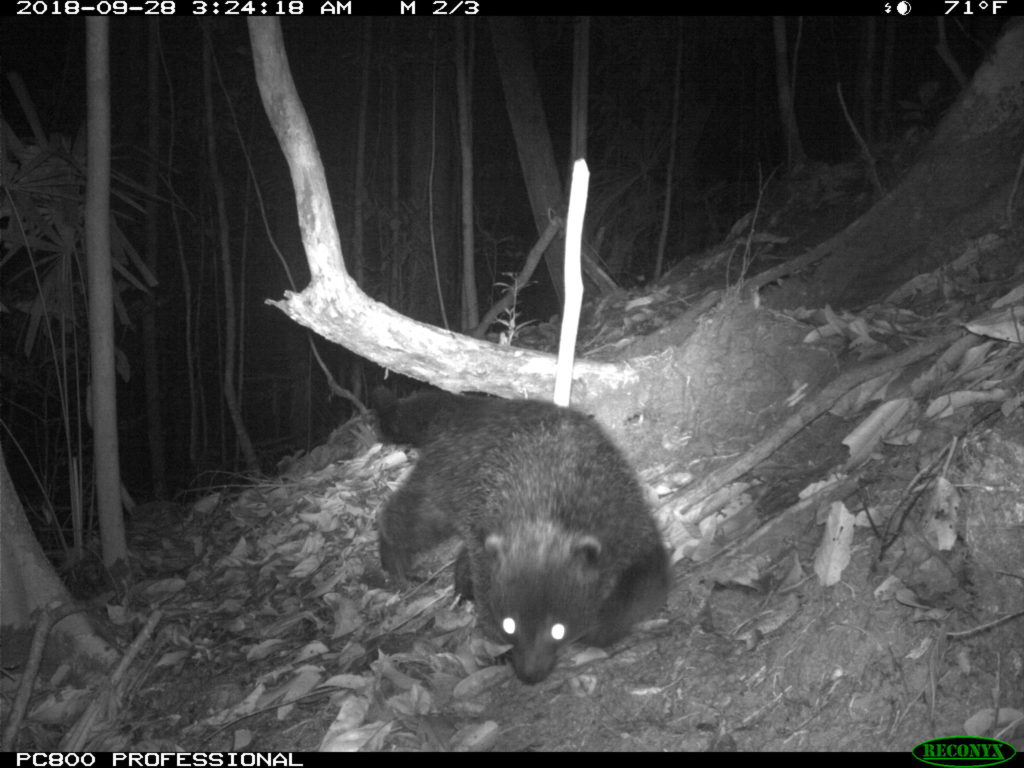
It’s great that we have binturongs on eMammal camera traps because they are mostly arboreal meaning they primarily live in the trees. It’s therefore harder to get them on cameras unless you put your cameras in the trees (which some eMammal projects do). Camera traps have revealed though that binturongs come to the ground more than scientists traditionally thought (yay camera traps!). Binturongs live in India, where I have a camera trap project with school kids, but so far we have not photographed one (fingers crossed!).
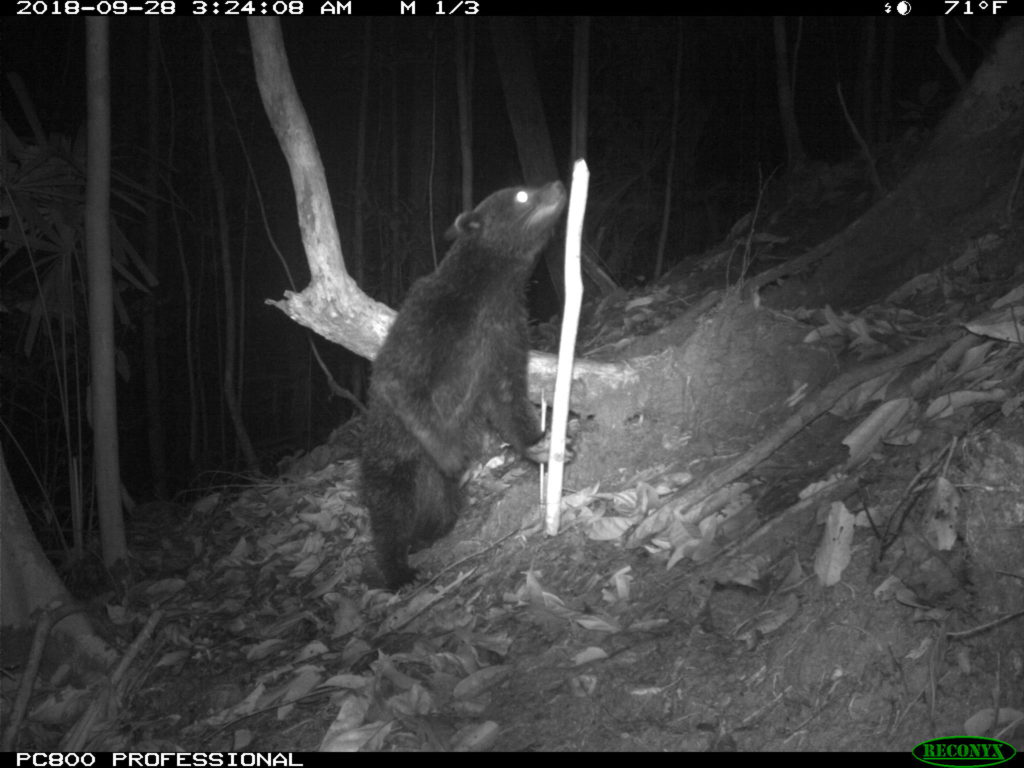
One of my favorite facts about binturongs is that they have prehensile tails! This means that their tail can wrap around things (like a monkey or an opossum). Because they are largely arboreal, their tail helps them get around in the trees and acts like another limb.
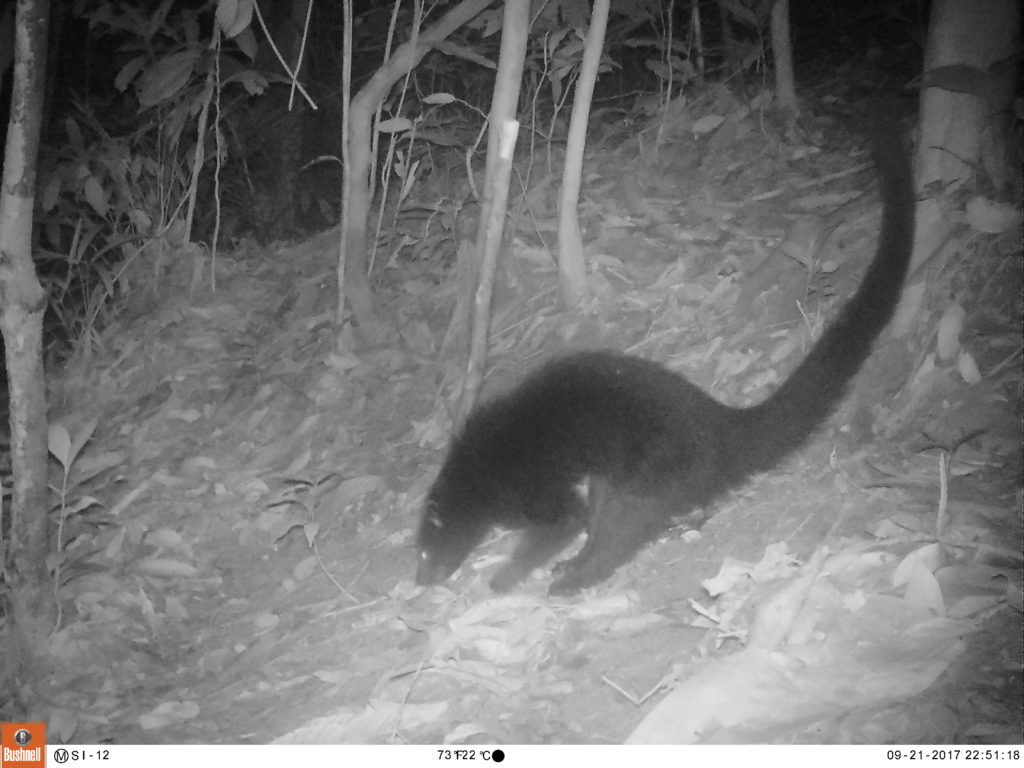
Binturongs are taxonomically in the order Carnivora, but this is characteristic of their diet. They are thought to be mostly frugivorous.
Supposedly binturongs smell like freshly buttered popcorn. Former zookeepers have confirmed this with me. I’ve never smelled one, but hopefully I will one day in the wild.
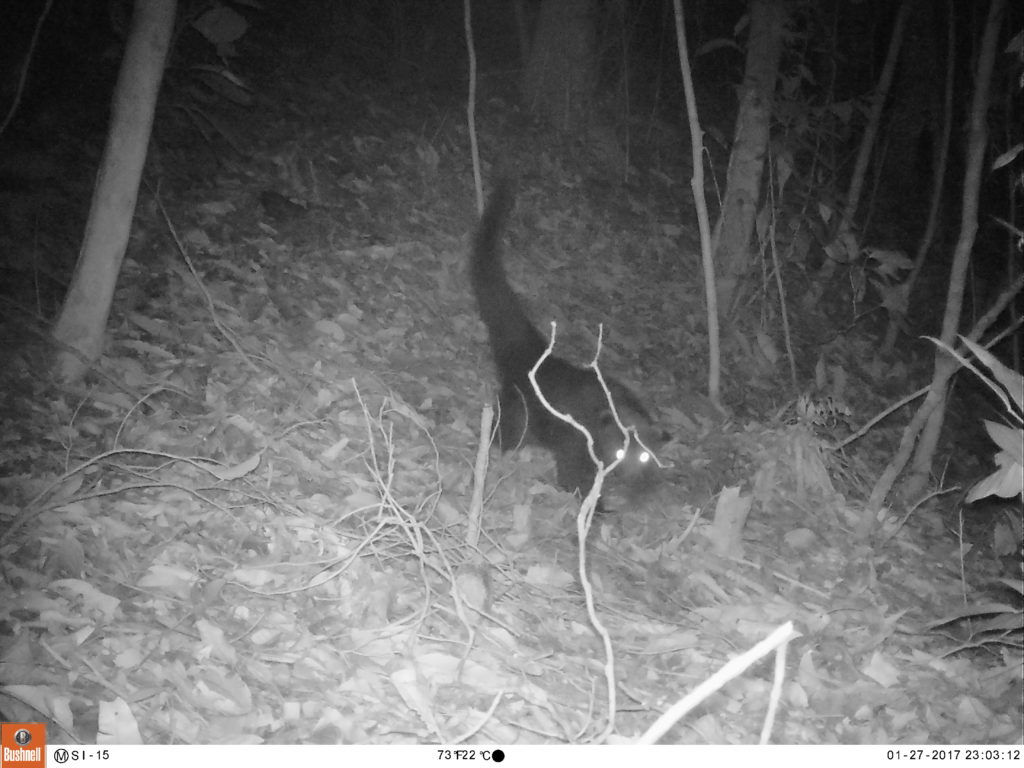
Sadly, like many other super cool mammals, binturongs are decreasing and they are considered vulnerable on the IUCN red list of endangered species (one step above endangered). The biggest threat to binturongs is habitat loss. Previous research shows that this species is tolerant of some disturbance as it has been found in logged areas and forest plantations, but it looks like there are no studies confirming it lives in palm oil plantations (another reason to skip palm oil and/or only buy brands that are sustainable). Like other animals in Asia, they are also in decline because of increased demand for wildlife trade due to their use in traditional medicine and as pets. So don’t eat a binturong and don’t have one as a pet!
For more on how palm oil affects wildlife, and how you can change your diet to help save wildlife, read “5 Easy Changes to Your Diet to Help the Planet.”
Love this post? Share it with friends!

